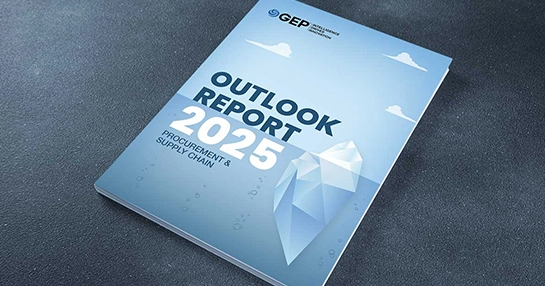
5 Emerging Trends Shaping Education Procurement
- Educational institutions face significant challenges, including flat funding, rising costs, deferred maintenance and increased operational pressures.
- Procurement cooperatives, regional collaborations and outcomes-based contracting are helping schools reduce costs and improve efficiency.
- AI and data analytics are transforming procurement by automating tasks, enhancing transparency and enabling smarter decision-making.
February 05, 2025 | Procurement Strategy
Educational institutions today face a wide range of challenges, from uneven enrollment dynamics and rising competition to margin pressures and flat public funding.
Additionally, schools and universities are grappling with rising wage demands and increased capital needs. Moody’s estimates that colleges and universities alone have deferred over $950 billion in maintenance and capital requirements. These financial and operational pressures underscore the need for smarter, more efficient procurement practices to optimize resources and support institutional goals.
In this blog, we explore five key trends in education procurement that are addressing these challenges and shaping the future of the sector.
Procurement Cooperatives
One way educational institutions are tackling resource constraints is by joining procurement cooperatives. These cooperatives enable institutions to pool their purchasing power, allowing them to negotiate better discounts, secure more favorable supplier terms and improve regulatory compliance.
By leveraging economies of scale, procurement cooperatives also help institutions mitigate risks and align procurement strategies with organizational objectives. This collaborative approach not only reduces costs but also strengthens supplier relationships, creating a win-win scenario for all stakeholders.
Regional Collaboration
Similar to a procurement cooperative, rural education districts can leverage economies of scale and solve the challenge of limited resources and staff by banding together in regional collaboratives.
These partnerships enable rural districts to implement critical initiatives and share essential services, such as health insurance, special education services or electricity, while maximizing the impact of limited budgets. For instance, the Eastern Shore Collaborative of Maryland runs its own electricity procurement cooperative to share costs.
Outcomes-Based Contracting
Education Week recently reported on this novel approach to education procurement, which has already become common in the health care sector. In outcomes-based contracting, school districts pay for part of the contracted products or services up front, up front but only pay the rest if that product helps them achieve concrete outcomes as delineated in the contract.
This goes both ways – if the district doesn’t meet its deliverables, it has to pay the full price, regardless of whether they achieve the outcome. This is a big shift for districts moving from a traditional approach to contracting and procurement. It requires both vendor and school district to collect better data and to adjust contracts accordingly – both areas where AI-powered procurement tools can help streamline processes.
Public-Private Partnerships
Higher education institutions especially are facing funding pressures and concerns about affordability, in addition to a backlog of maintenance and capital projects. For areas like real estate, facilities and front and back-office management, public-private partnerships can make a huge difference. By effectively outsourcing non-core activities to a private sector provider, education procurement teams can offset risk and provide greater efficiency in managing infrastructure and maintenance.
One example of a public-private partnership in education procurement is the Federal Communications Commission’s E-Rate Program, which helps schools and libraries obtain affordable access to telecommunications and internet services.
Administered by the FCC and funded by the Universal Service Fund (USF), the program enables educational institutions to partner with private telecommunications companies, internet providers and technology vendors to procure broadband connectivity, Wi-Fi infrastructure and digital learning tools.
This partnership benefits schools by providing subsidized access to modern technology and private companies by securing long-term contracts in the education sector.
AI and Data Analytics
Educational institutions are increasingly investing in AI and data analytics to streamline procurement processes and drive efficiency. By leveraging AI-powered tools, schools and universities can automate repetitive tasks such as supplier selection, invoice matching and contract management, significantly reducing manual effort and errors.
Advanced data analytics provides valuable insights into spending patterns, helping institutions identify cost-saving opportunities, negotiate better contracts and improve budgeting accuracy. Predictive analytics can forecast procurement needs based on historical trends, enabling more proactive planning and inventory management.
Additionally, these technologies enhance transparency by monitoring vendor performance and ensuring compliance with procurement policies. By adopting AI and data-driven strategies, educational institutions are not only optimizing procurement workflows but also reallocating resources to focus more on their core mission of delivering quality education.
Conclusion
As educational institutions face increasing financial and operational pressures, innovative procurement practices are becoming critical to their success. Procurement cooperatives and regional collaborations are helping institutions leverage economies of scale, while outcomes-based contracting and public-private partnerships offer new ways to align procurement with results and efficiency.
Meanwhile, AI and data analytics are driving smarter, more transparent decision-making. By embracing these trends, educational institutions can overcome resource challenges, optimize procurement processes and focus more effectively on delivering high-quality education to students.



